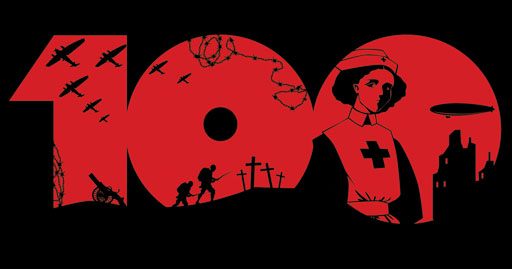Lest we forget
In People news
Follow this topic
Bookmark
Record learning outcomes
Steve Ainsworth remembers Olive Crooke, a remarkable Irish pharmacist who served during the First World War.

This year marks the 100th anniversary of the end of the First World War. Many pharmacists volunteered to serve their country during the course of that terrible conflict. Many gave their lives, but most lived to tell their tales.
Many lived through the Second World War too, although no doubt a number of them met untimely ends in the period 1939 to 1945.
Yet unique amongst that roll of honour was a remarkable female pharmacist: Olive Louise Crooke.
Olive Crooke, one of eight children, was born on 17 April 1871 in Newbridge, County Kildare, Ireland. Her father, Reverend Millward Crooke, had been chaplain to Britain's Armed Forces throughout the Crimean War.
Three of Olive's brothers were soldiers: Lieutenant George Douglas Crooke (1865-97) died in action on the North West frontier of India; Lieutenant Milward Crooke (1870-1901) died of fever at Cape Coast Castle on the West African coast. Olive's youngest brother, Lieutenant Charles William Cantwell Crooke (1876-1906) drowned in West Africa whilst serving with the West African Frontier Force.
Olive's uncle, Thomas Bernard Hackett (1836-80), had been awarded the Victoria Cross during the Indian Mutiny. Her eldest brother, Thomas Leslie Crooke (1861-1943), was a physician and surgeon; he was Lord Tennyson's doctor before emigrating to New Zealand.
Olive studied in Edinburgh under the feminist and first female doctor in Scotland, Dr Sophia Jex-Blake (1840-1912), before using her skills in the First Word War as a pharmacist.
Head dispenser
In early 1918 Olive was living at the Apothecaries Hall, Blackfriars in London. She was 46 but declared herself to be only 41 in order to join the Red Cross. She served as a VAD (Voluntary Aid Detachment) head dispenser from February 1918 to 30 November 1918. From March 1918 she served in France at No. 72 General Hospital at Trouville as chief dispensing pharmacist. The military hospital provided beds for 1,600 patients.
After the war this doughty 'daughter of Empire' moved to Bombay in India to continue practicing her profession before returning to London. Then in her sixtieth year she set off on her travels once more to move to Kenya.
In 1934 Olive packed her trunk once again and headed for Christchurch in New Zealand to live with her now-retired elder brother Dr Thomas Crooke.
When Thomas died in November 1943, and despite the world now being convulsed by a second global conflict, Olive, already in her 73rd year, decided to head for home.
The passenger manifest of the SS Rimutaka still lists Olive as a 'pharmacist'. After a month at sea the ship arrived in New York on 31 March 1944, and, after braving the U-boat infested North Atlantic, docked in Liverpool on 18 April 1944: Olive had exactly two months left to live.
Olive would die in London in the very act of praying for the safety of those brave servicemen who just 12 days earlier had stormed the beaches of Normandy in the D-Day landings.
Chapel blast
At 11.20am, on Sunday 18 June 1944, a V1 flying bomb hit the Guards' Chapel on Birdcage Walk, not far from Buckingham Palace. The blast demolished most of the building and caused large loss of life. The Chapel - built in 1838 and also known as the Royal Military Chapel, St James's Park €“ formed part of Wellington Barracks, home to the Brigade of Guards.
A mixed military and civilian congregation had gathered at the Chapel for morning worship. The choir had just started the Sung Eucharist when the flying bomb cut out and fell onto the Chapel roof.
Tons of rubble fell onto the congregation. Over 120 soldiers and civilians were killed and 141 others were seriously injured.
The Guards' Chapel incident was the most serious V1 attack on London during the war. The flying bomb left only the apse of the Chapel intact.
Today's Guards' Chapel was rebuilt on the same site during 1962-1963. Just inside the Chapel's west entrance, a large engraved wall memorial and book of remembrance record the soldiers and civilians who died in the 1944 attack. The original altar cross and six silver candlesticks still adorn the Chapel's altar.
Hitler's blitz on Britain, which included over 8,000 V1 and V2 unmanned flying bombs, killed over 40,000 civilians during the Second World War and it is all too easy to forget individuals amongst that vast number.
Pioneering pharmacist Olive Louisa Crooke is, however, commemorated on the Civilian War Dead memorial in Westminster City Cemetery; she was buried there on 28 June 1944.
